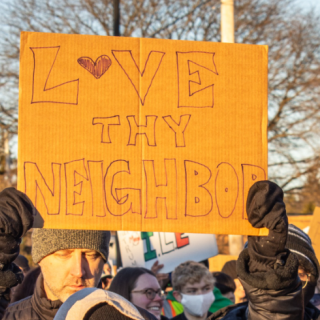At the end of June, our corporate media overlords blessed us with the most inclusive political debate in American history. Twenty candidates seeking the Democratic presidential nomination made their case to voters over the course of four hours on television – to get on the stage, they only needed a minimum of 65,000 unique donors, regardless of how they were polling in the primary race. Thanks to these requirements, voters were able to hear from a diverse field of qualified (and unqualified) candidates.
As a former third party candidate for office myself, I found this inclusion of twenty candidates particularly interesting. For years I was told that media outlets were unable to include more than two candidates in a debate unless they were polling at a specific number, despite the fact that these polls and polling methods were never exactly disclosed. In fact, every two to four years when partisan elections take place in our country, it doesn’t matter if third party candidates are running on a local, state or national level -- we’re always somehow kept out of the debates because of our “low” polling numbers.
In 2010, I ran for U.S. Congress as a Libertarian in Ohio’s 12th congressional district against Republican Pat Tiberi. I was kept out of WOSU’s televised debates because the network’s news director Mike Thompson told me I needed to be polling at 5 percent or higher in an independently conducted poll. While a Democratic poll had me at 10 percent, it wasn’t independent enough for Mr. Thompson, and even though I was the only other candidate on the ballot besides Mr. Tiberi and his Demcoratic opponent, Franklin County Commissioner Paula Brooks, I was not allowed in WOSU’s debate.
Eight years later, I ventured back into Ohio’s political minefield as the Libertarian candidate for governor in a year where the stakes were much higher for third parties – in the time since I had last run, Ohio’s Republican state legislators made it mandatory for third parties to maintain ballot access by receiving at least 3 percent of the popular vote in a gubernatorial or presidential election. Keep in mind that third parties can only exist in our country by being on the ballot, so no pressure.
Naturally, with a “mandatory minimum” of the vote percentage on the line, Ohio’s good ol’ boy media followed suit. The newly minted “Ohio Debate Commission” was convened by the state’s top news outlets and a handful of corporate and non-profit sponsors to set up three televised gubernatorial debates. Naturally, my campaign team and I expected that if a poll showed us polling at 5 percent, then we would have met the threshold to be included in these debates. After all, that was the case in 2010. Sure enough, when an Innovation Ohio poll showed us polling at 6 percent, the “Ohio Debate Commission” raised the threshold for being included to 10 percent. Of course they did.
This is what makes the recent NBC News Democratic debates so fascinating. They literally threw twenty candidates into two debates that spanned over four hours and two nights of television with candidates who were polling at 1 percent or less. Sure, we all ended up having to hear way too much about Marianne Williamson’s yoga class, but this just proves that Ohio’s political gatekeepers like WOSU and The City Club of Cleveland can absolutely include more than two candidates in their debates. In presidential elections, the Commission on Presidential Debates plays the same game, despite the fact that the Libertarians ran a presidential ticket in 2016 with more governmental experience than the Republican and Democrat candidates combined. This would all be a hilarious joke if it weren’t slowly strangling our democracy to death.
When I was included in the same room as the Republican and Democratic candidates for governor in 2018 – thanks to the editors at The Plain Dealer in Cleveland – I made my points efficiently and effectively, even if people didn’t agree with them. I also got my two opponents to shake hands by the end of the meeting. When I was included in the public forums and editorial meetings with Tiberi and Brooks in 2010, I made the discussions better by using a little bit of humor and highlighted when I thought my opponents were right or wrong on the issues. The same thing occurred when I ran against seven other candidates for mayor of Bexley in 2007 and we were all included in every public debate.
As we saw with NBC News’ Democratic debates, more voices means more choices in our political discourse and that’s a good thing, even if you don’t like all of your options. If the American experiment is to get back on track, it would be good for the country’s “debate establishment” to follow suit.



